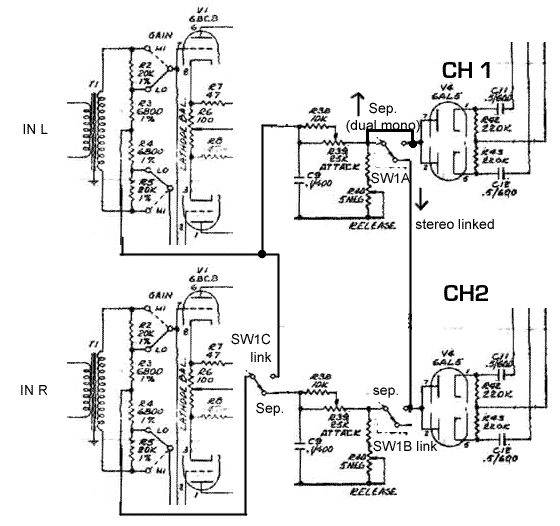Val_r
Well-known member
Is there a way to create a stereo link button which can link two channels of vintage vari-mu limiters, such as UA175?
Has anyone tried out this?
Has anyone tried out this?

Not sure if I'm asking the right question but, if you send an ac signal from a channel to feed another channel's control amp, wouldn't that actually be injecting that sending channel's ac signal into the other channel's output before the control amp as well?The Fiat solution is to tie the 2 control voltages together. The Ferrari solution is to disconnect the bottom tube grid control input and connect it to the top one's control voltage.
Then take the input to the top control amp and give it a 50/50 mix of both limiter outputs.
You get one set of adjustments only, and image tracking is usually optimum.
Thanks. I get that from the fiat solution but I'm reading the second solution as input/pre rectifier? No?Both ties are post-rectifier, effectively taking out one channel's Thr, Rat, Art, Rel.
Then take the input to the top control amp and give it a 50/50 mix of both limiter outputs.
He's saying the cheaper car "fiat" version is one way but the more expensive car "ferrari" method is the second way.....Hm, not sure what 'fiat' means,
Enter your email address to join: